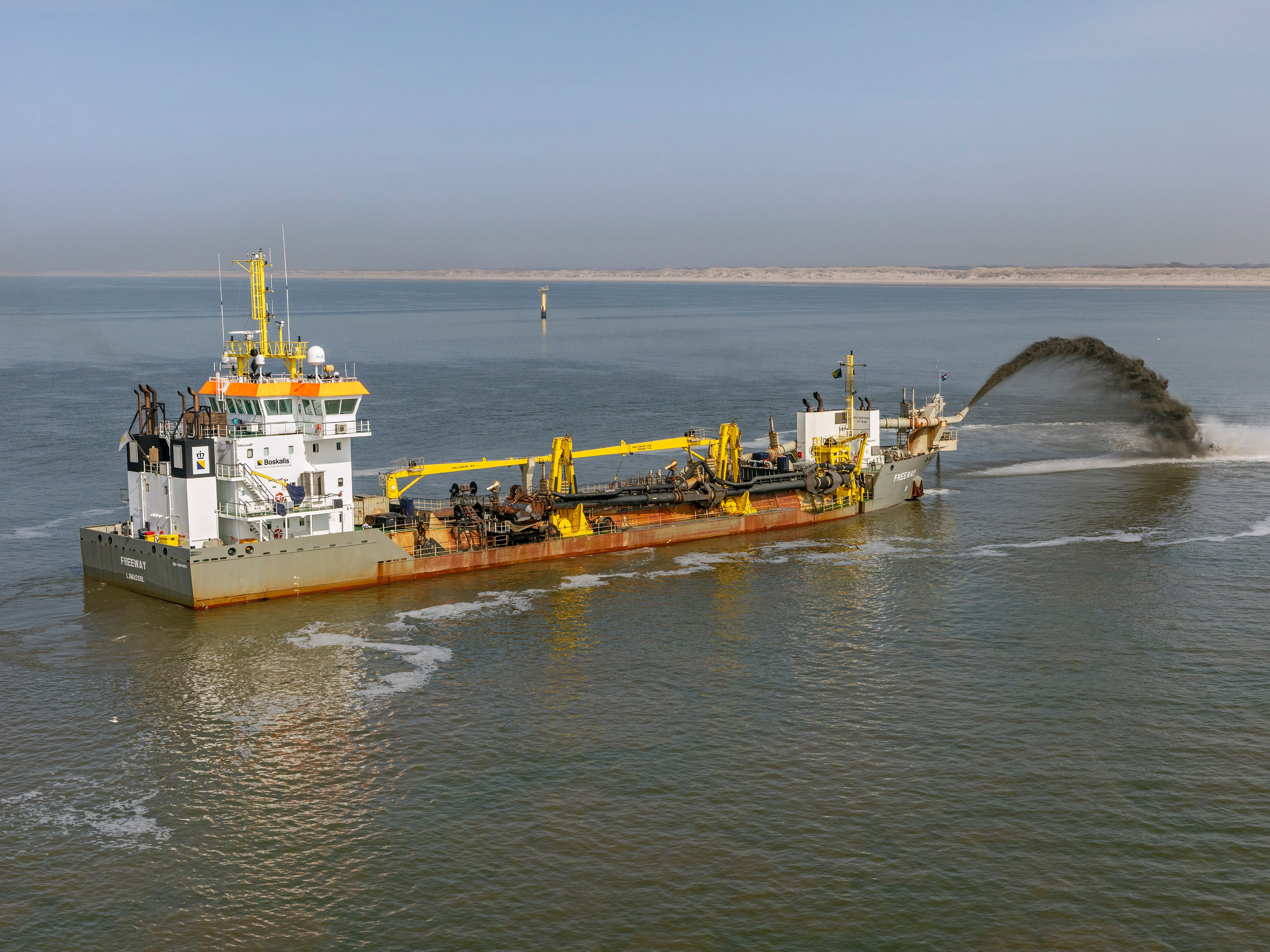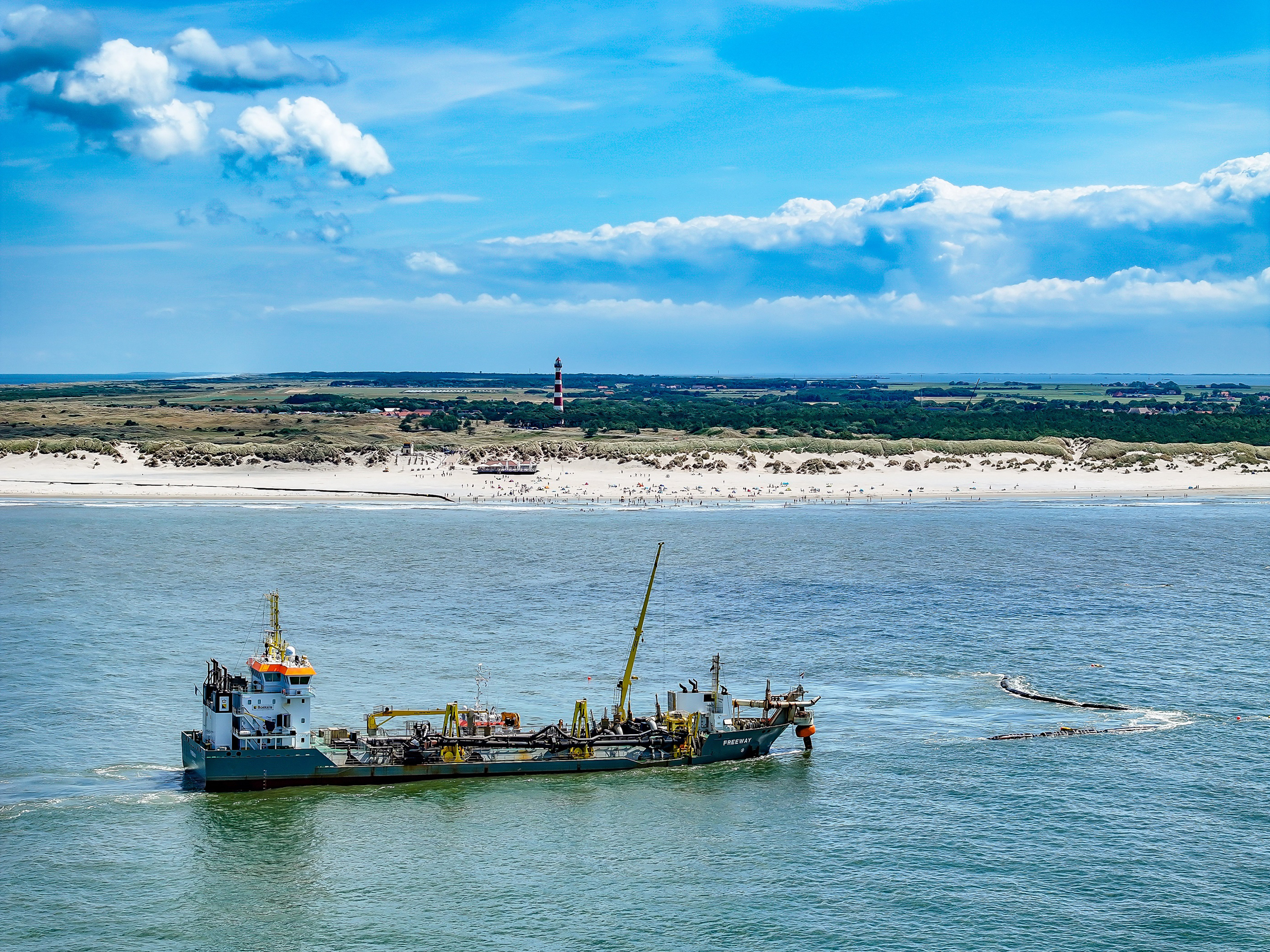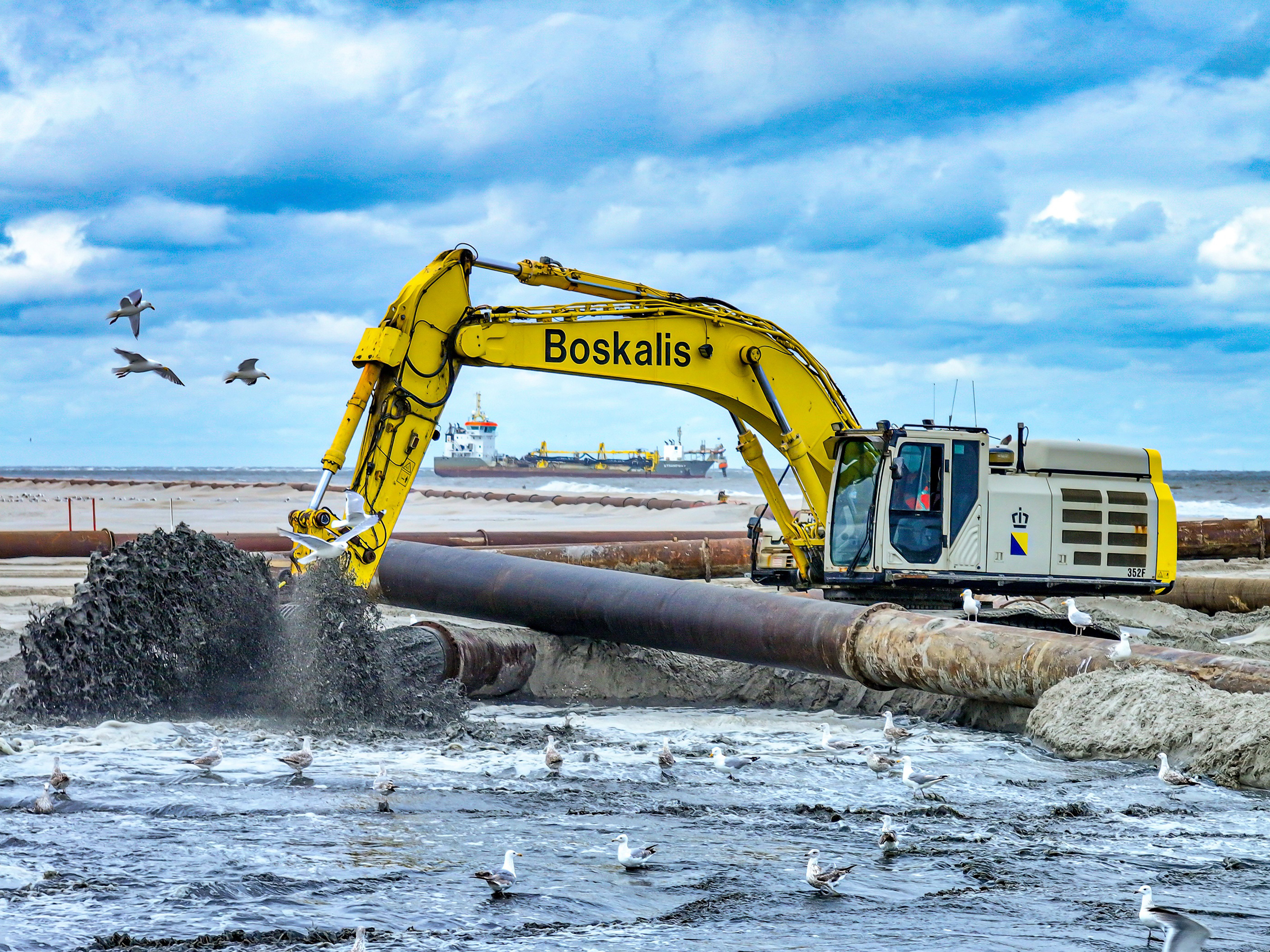For decades, North Sea beaches have been prone to coastal erosion. Without extra sand, the coastline in some locations – like the Wadden island of Ameland in the north of the Netherlands – would move a meter inland each year. So Boskalis has been involved for many years on maintaining and reinforcing much of the Dutch coast with a significant number of trailing suction hopper dredgers, and those vessels are also used for coastal maintenance in other European countries.
The North Sea beaches of the Netherlands are maintained with some 12 million cubic meters of sand every year. Other countries bordering the North Sea, such as Germany and the United Kingdom, also need millions of cubic meters of extra sand to protect their coastal areas. In short: coastal defense work on this small part of the world carries on throughout the year.
Boskalis conducted several sand nourishment operations in the Netherlands in 2023. Sand was first deposited on the western beach of the island of Texel and the foreshore near Noordwijk and Wassenaar. After that, extra sand was deposited in the Dutch province of Zeeland (Breezand, Onrustpolder) and the Wadden islands of Texel (on the eastern side) and Ameland. At the end of the year, nourishment work on the Vlieland-Texel-Bergen-Egmond cluster was still in full swing.
Sustainability
All of these projects are part of the four-year Coastline Maintenance program of our client, Rijkswaterstaat (the Dutch Directorate General for Public Works and Water Management). “We have had a very busy year on the Dutch coast,” says Johan van der Vorm, director of coastal and seaport projects for Boskalis Nederland. “Our successful acquisition of these wonderful projects is the result of the important role we give to sustainability during operations and we have made major progress in that area in recent years. For example, three of our trailing suction hopper dredgers have been fitted out with SCR (Selective Catalytic Reduction) systems. That is a ‘post-treatment system’ that captures most of the nitrogen released during dredging operations. This means that – especially on the Dutch coast – we are one of the leaders in sustainability in our industry.”
Ideal scenario
“The utilization rate for the trailing suction hopper dredgers on the coastline maintenance program is moving toward 48 weeks this year. So we need to plan effectively, scheduling all the projects as efficiently as possible. That also involves taking the weather conditions on the North Sea into account,” says Van der Vorm. “In the ideal scenario, you can alternate between working on beach nourishment, foreshore nourishment and maintenance work in the port, as we do in Rotterdam. The weather regularly means we can’t work on the unsheltered beaches: in that case, we can send our vessels to one of the foreshores or the port area, which is sheltered. That requires continuous communications between project managers, skippers and office colleagues: together, they make up a relatively small but close-knit group that tries to manage the overall picture on the Dutch coast as efficiently as possible.”



Blue and yellow
Operations manager Martijn Zwakhals works on optimizing the coordination of all the operations on the Dutch coast. “We obviously try to deploy our vessels in the best possible way. Because of the projects in locations like Germany and the United Kingdom, we work closely with the Boskalis international Dredging division, sharing staff and therefore their knowledge and expertise. So we don’t work for a specific department in the company but for ‘blue and yellow’: Boskalis as a whole.”